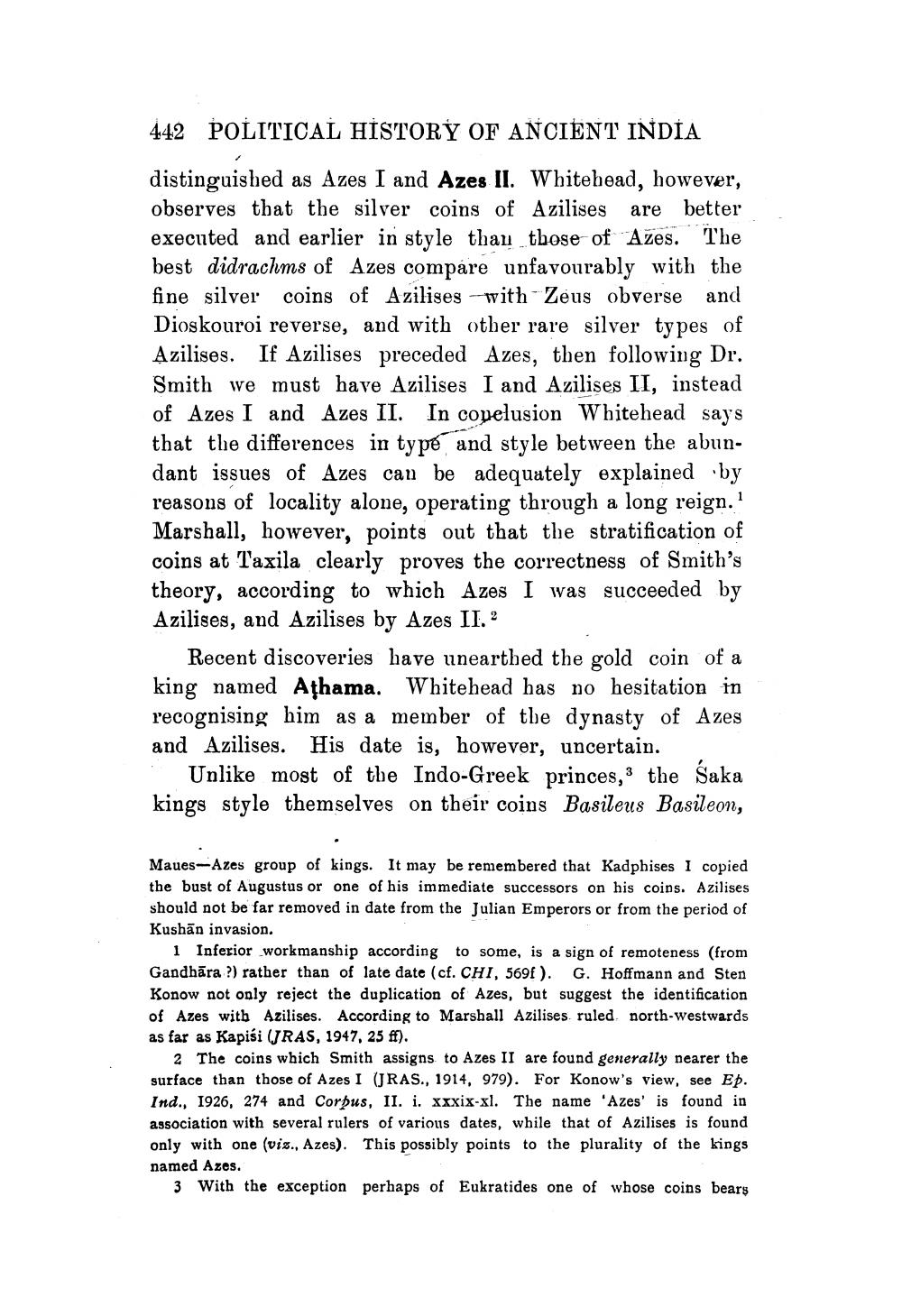________________
442 POLITICAL HİSTORY OF ANCIENT INDIA distinguished as Azes I and Azes II. Whitehead, however, observes that the silver coins of Azilises are better executed and earlier in style than those of Azes. The best didrachms of Azes compare unfavourably with the fine silver coins of Azilises with Zeus obverse and Dioskouroi reverse, and with other rare silver types of Azilises. If Azilises preceded Azes, then following Dr. Smith we must have Azilises I and Azilises II, instead of Azes I and Azes II. In copelusion Whitehead says that the differences in type and style between the abundant issues of Azes can be adequately explained by reasons of locality alone, operating through a long reign.! Marshall, however, points out that the stratification of coins at Taxila clearly proves the correctness of Smith's theory, according to which Azes I was succeeded by Azilises, and Azilises by Azes II. 2
Recent discoveries have unearthed the gold coin of a king named Athama. Whitehead has no hesitation in recognising him as a member of the dynasty of Azes and Azilises. His date is, however, uncertain.
Unlike most of the Indo-Greek princes, the Saka kings style themselves on their coins Basileus Basileon,
Maues-Azes group of kings. It may be remembered that Kadphises I copied the bust of Augustus or one of his immediate successors on his coins. A zilises should not be far removed in date from the Julian Emperors or from the period of Kushān invasion.
1 Inferior workmanship according to some, is a sign of remoteness (from Gandhāra ?) rather than of late date (cf. CHI, 569f ). G. Hoffmann and Sten Konow not only reject the duplication of Azes, but suggest the identification of Azes with Azilises. According to Marshall Azilises ruled north-westwards as far as Kapisi (JRAS, 1947, 25 ff).
2 The coins which Smith assigns to Azes II are found generally nearer the surface than those of Azes I (RAS., 1914, 979). For Konow's view, see Ep. Ind., 1926, 274 and Corpus, II. i. xxxix-xl. The name 'Azes' is found in association with several rulers of various dates, while that of Azilises is found only with one (viz., Azes). This possibly points to the plurality of the kings named Azes.
3 With the exception perhaps of Eukratides one of whose coins bears




